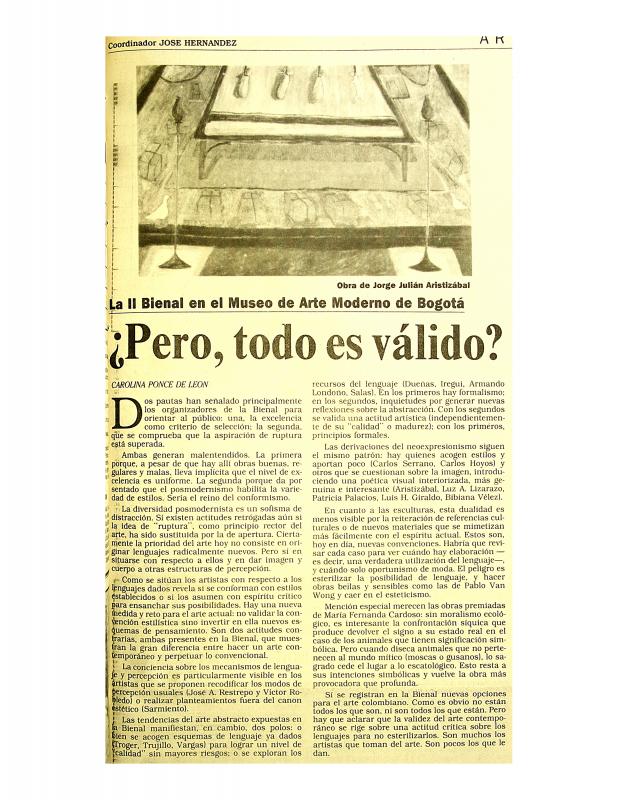In April–May 1990, Colombian artist María Fernanda Cardoso (born 1963) was given an honorable mention at the XXXIII Salón Nacional de Artistas [Thirty-third National Artists Salon], an event organized by the Colombian state agency, Colcultura. The work, called Sin título [Untitled] was an installation created from black dirt and pantyhose. That same year, Cardoso won the prize at the II Bienal de Arte de Bogotá of the Museo de Arte Moderno with La corona para una princesa Chibcha [The Crown for a Chibcha Princess]. This work, consisting of taxidermic frogs delicately strung on a circular metallic structure, was controversial and had a strong impact on the viewer. The violent times the country was going through made the viewers highly sensitive to this work. Groups with ecological concerns questioned the use of animals for this purpose and others regarded the frog as a reinterpretation of a sacred figure in Muisca [Chibcha] mythology. The interview contributes to the reading and interpretation of the artist’s earliest artistic period and Cardoso’s responses provide further information about her artistic process such as the intuitive sense that suggests materials to her, the configuration of her works, and her main themes of life, death, and nature. The text focuses on investigating her creative process and avoids focusing on the scandal that arose from her use of taxidermied animals, which had been fully covered by arts journalists in the media. For further discussion of that aspect: (See “¿Pero, todo es válido?” [But, Is Everything Valid?] written by Carolina Ponce de León, doc. No. 858375, and “La Bienal y las rupturas” [The Biennial and the Ruptures] by Eduardo Serrano, doc. No. 858355). Art critic Javier Gil (born 1955) was director of the education department of the Museo de Arte Moderno de Bogotá and a member of the visual arts department at Colombia’s Ministry of Culture.


